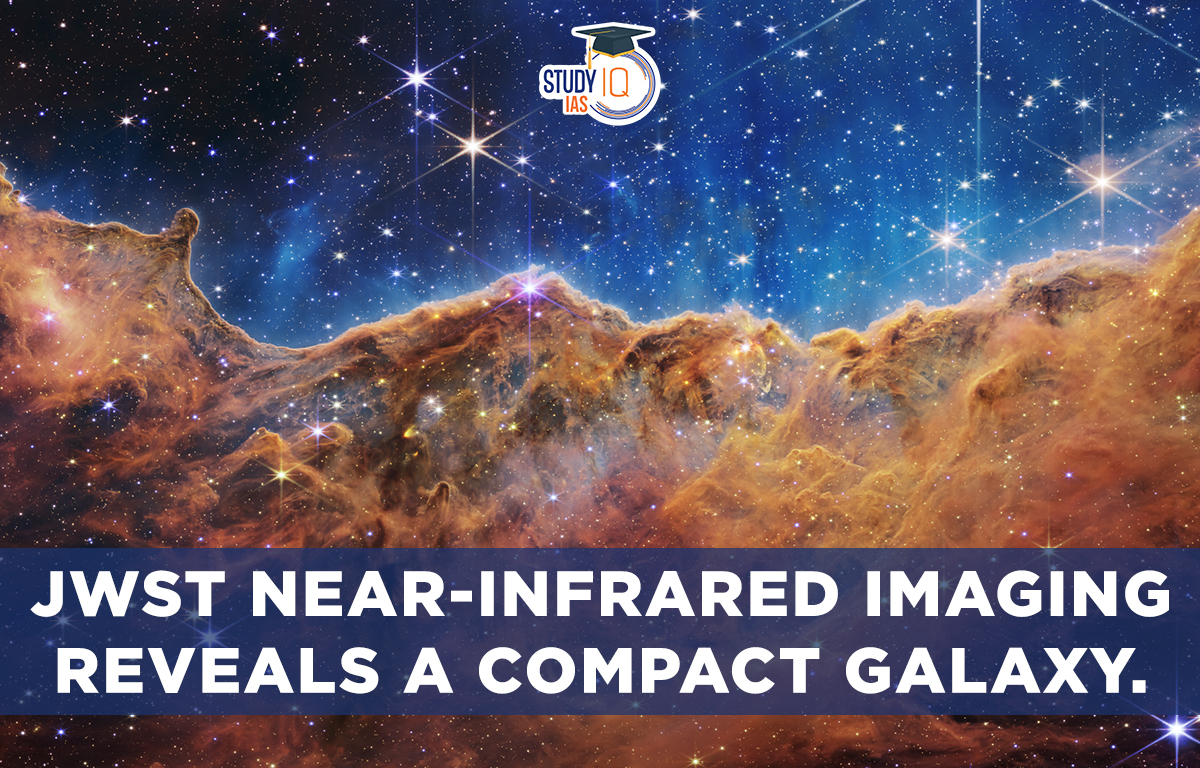Table of Contents
Context: Imaged received by James Webb Space Telescope (JWST) have revealed a rare gravitationally lensed galaxy, challenging our understanding of the universe.
What is the James Webb Space Telescope (JWST)?
- The James Webb Space Telescope (JWST) is a large, space-based observatory that is set to be the successor to the Hubble Space Telescope.
- It is named after James E. Webb, a former administrator of NASA who played a significant role in the Apollo program.
- The JWST is a collaboration between NASA, the European Space Agency (ESA), and the Canadian Space Agency (CSA) which was launched in December 2021.

Objectives of the James Webb Telescope
- To observe the first galaxies that formed in the early universe and learn more about the evolution of galaxies over time.
- To study the formation of stars and planetary systems in our own galaxy and in other galaxies.
- To search for and study the atmospheres of potentially habitable exoplanets, which could help us learn more about the potential for life beyond our solar system.
- To study the formation and evolution of black holes and other objects in the universe that emit high-energy radiation.
- To investigate the properties of dark matter and dark energy, which are believed to make up the majority of the matter and energy in the universe, but which cannot be directly observed.
Difference between James Webb Space Telescope (JWST) and Hubble Telescope:
| Hubble Space Telescope | James Webb Space Telescope | |
| Primary Purpose | Visible and ultraviolet observation | Infrared observation |
| Mirror Size | 2.4 meters (7.9 feet) | Over 6 meters (20 feet) |
| Wavelengths Observed | Visible and ultraviolet | Infrared |
| Orbit | Low Earth orbit | Second Lagrange point (L2), about 1.5 million kilometers (about 930,000 miles) from Earth |
| Instruments | Wide Field Camera 3, Cosmic Origins Spectrograph, Advanced Camera for Surveys, etc. | Near Infrared Camera (NIRCam), Near Infrared Spectrograph (NIRSpec), Mid-Infrared Instrument (MIRI), Fine Guidance Sensor/Near Infrared Imager and Slitless Spectrograph (FGS/NIRISS) |
| Primary Science Goals | Studying the universe’s evolution, studying black holes, studying dark matter and dark energy, etc. | Observing the first galaxies that formed after the Big Bang, studying the formation of stars and planetary systems, investigating the potential for life on exoplanets, etc. |
Key Findings of the Research
- The galaxy is referred to as RX J2129-z95, and is seen at a redshift of 9.51.
- The number refers to the extent to which the galaxy’s light has been stretched by the expansion of the universe, meaning that we are seeing it as it existed just 510 million years after the Big Bang.
- The galaxy’s redshift was confirmed by JWST’s NIRSpec (Near-Infrared Spectrometer) instrument, which also detected strong emission from hydrogen and oxygen gas clouds within RX J2129-z95.
Significance of the Findings
- In a new study published in Nature Astronomy, astronomers using the James Webb Space Telescope have found six of the earliest and most massive galaxy candidates that contradict the standard model of cosmology, suggesting that scientists may need to rewrite what we understand about the universe.
- These galaxies, which are seen between 500 and 700 million years from the Big Bang, are more than 10 billion times the mass of our Sun and grew too big too soon after the Big Bang.
- This could mean that the universe was expanding faster shortly after the Big Bang than predicted, requiring new forces and particles. Additionally, these galaxies will need to be converting nearly 100% of their available gas into stars, which is technically right at the edge of what is theoretically possible.
- The galaxies that existed in the early universe are very different from the galaxies that exist today and the usual assumptions about galaxy properties may not apply in the early universe.
- The observations of the galaxy were aided by a phenomenon called “gravitational lensing” that occurs when an immense amount of matter, like a grouping of galaxies, creates a gravitational field that distorts and magnifies light traveling from distant galaxies located behind it but in the same line of sight.
- The combined power of the James Webb Space Telescope and the galaxy’s magnification due to gravitational lensing allows us to study this galaxy in detail.


 UPPSC Previous Year Question Papers, Dow...
UPPSC Previous Year Question Papers, Dow...
 Most Commonly Used Cancer Drugs and Thei...
Most Commonly Used Cancer Drugs and Thei...
 Tansen Biography, Musical Legacy and Mas...
Tansen Biography, Musical Legacy and Mas...





















